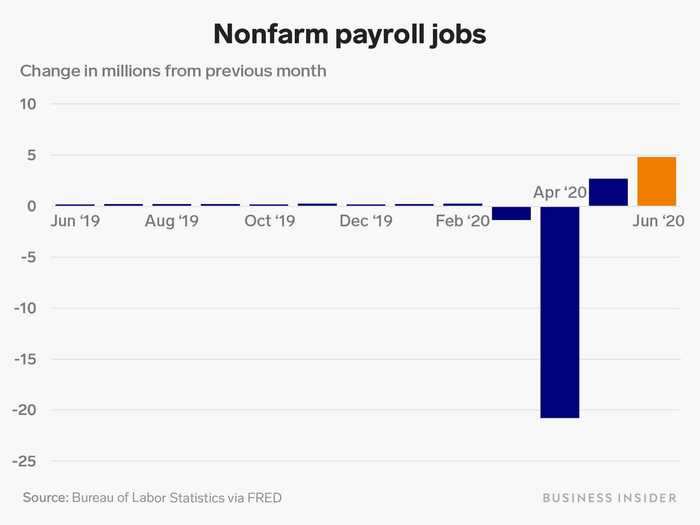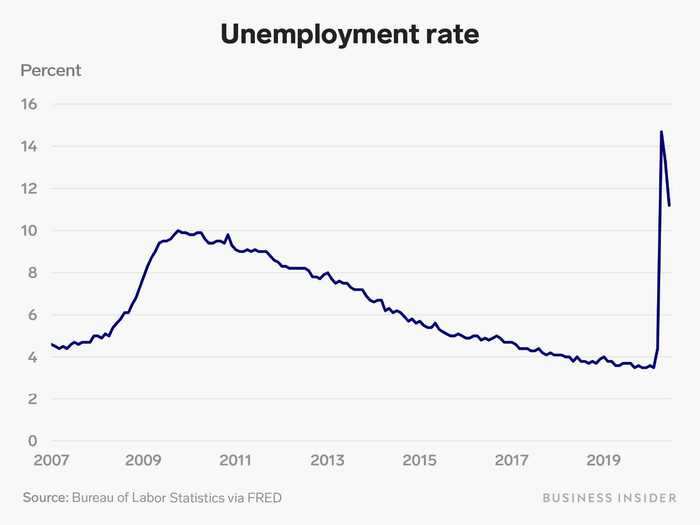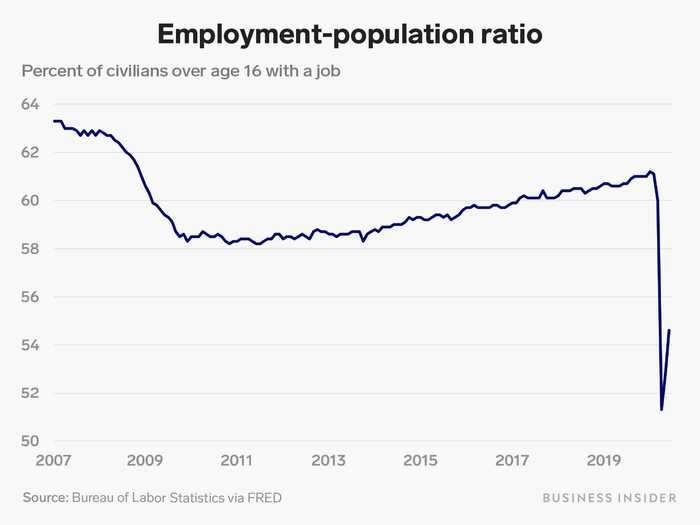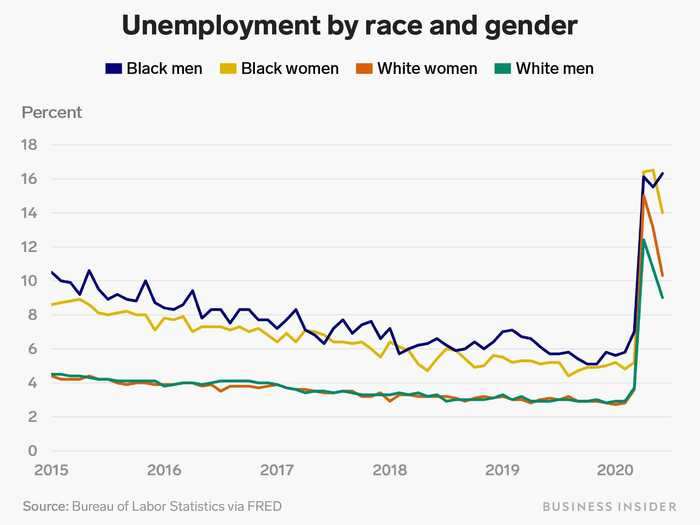These 6 charts from the June jobs report show how much the economy has recovered — and how much further it has to go
Carmen Reinicke,Andy Kiersz
- The June jobs report released Thursday from the Bureau of Labor Statistics showed that the economy added 4.8 million payrolls during the month, and that the unemployment rate declined to 11.1%.
- It marks the second month in a row that the nonfarm payrolls report has exceeded expectations.
- Here are six charts that show how much the US labor market has rebounded so far in the pandemic recession recovery, and how much further there is to go before reaching pre-crisis levels.
The labor market recovery continued in June as states across the US reopened their economies following coronavirus-pandemic lockdowns earlier in the year.
The report released Thursday from the labor department showed that the economy added 4.8 million jobs during the month, and that the unemployment rate declined to 11.1% from 13.3% in May.
The June report also marks the second month in a row that nonfarm payrolls have exceeded economists' expectations, showing just how swiftly the US economy has recovered since starting the reopening process. Economists had expected 3 million jobs added, and the unemployment rate to decline to 12.5% in June.
In May, economists expecting a dismal report were shocked when the US added a revised 2.7 million jobs, and saw the unemployment rate declined to 13.3% from 14.7%.
"The bounce is impressive and welcome but there is a long road ahead to restore all the jobs that were lost in this recession," Bank of America economists led by Michelle Meyer wrote in a Thursday note.
President Donald Trump cheered the results in a Thursday press conference, saying "today's announcement proves that our economy is roaring back, it's coming back extremely strong," adding that there are some places where "we are putting out the flames."
US stocks went higher after the report, with all three major indexes posting gains.
While the report shows that the economic recovery from the pandemic recession progressed in June, there is still a long way to go before the labor market is at pre-crisis levels. Even though the US economy has added 7.5 million jobs in the last two months, it still has to add about 15 million more to break even from coronavirus pandemic losses.
And, there could be trouble ahead — the June report reflects only the first half of the month, before spiking coronavirus cases led more than 20 states and cities to either rollback or pause reopening plans.
"June is a tale of two cities," Becky Frankiewicz, ManpowerGroup North America president, told Business Insider.
"The first few weeks of June were strong, continuing a nice optimistic trend, and the last two weeks really slowed," she said, adding that the pullback was likely due to hiring slowing in states that rolled back or paused reopening efforts.
And, while jobs were added, elevated layoffs persist. In a report released simultaneously on Thursday, the Labor Department showed that 1.4 million Americans filed for unemployment insurance last week.
For the full impact of paused plans, re-instated restrictions, and continued layoffs, economists and industry watchers will have to wait for the July report, due in August.
Here are six charts from the June jobs report that show how much progress the US labor market has made so far, and how much further there is left to go before there's a full recovery.
READ MORE ARTICLES ON
Popular Right Now
Popular Keywords
Advertisement






